
Subsea Supplies Targets US in Partnership with DRIFT Offshore
partnership with DRIFT Offshore to enhance subsea operations for its growing US customer base. This collaboration will provide customers across the region with faster access to Burton subsea connectors and cable assemblies, combined with DRIFT Offshore’s technical expertise from its base in Florida.The partnership represents a joint $250,000 investment in machinery, tooling, stock, and test equipment to support expanded operations. By providing local stock availability and faster response times, it will reduce downtime and enhance supply-chain reliability across the energy sector.DRIFT Offshore&rsq
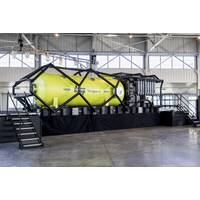
DEEP Partners with Unique Group to Deliver Subsea Human Habitat
and their long-term roadmap includes building Sentinel, a larger subsea habitat system that enables researchers and scientists to live and operate underwater at depths of up to 200 meters for up to 7 days or more at a time. The first pilot habitat, Vanguard, is being built right now in Sebastian, Florida, and will be followed by the Sentinel habitat in the years following, marking a significant advancement in ocean exploration.Unique Group’s scope includes foundation design and geotechnical survey management, metocean data collection, and cyclonic survivability studies. Using Computational

UFO App Logs Mysterious Underwater Sightings
has collected, two include mysterious lights moving below the ocean’s surface captured on phone cameras, and seafarers reporting objects coming up from the deep.The most striking video is of two mysterious underwater lights captured from a boat.Enigma #303093 - 2023 Jun 11 • Fort Lauderdale, Florida. © EngimaAs of August 2025, the Enigma app has logged over 9,000 U.S. sightings within 10 miles of shorelines and major waterways. Approximately 1,500 of those reports specifically mention “water,” “ocean,” “lake,” or “beach” (≈17%), and
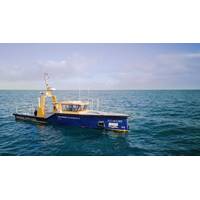
Down Under
, a collaboration between Advanced Navigation and marine consultancy O2 Marine saw three Hydrus AUVs deployed in May to capture high-resolution, geo-referenced imagery and video of the Hall Bank reef site in Western Australia. And in June, Hydrus was deployed across shallow reefs off the coast of the Florida Keys as part of a NOAA program aimed at providing a robust picture of the condition of coral reef ecosystems in the region.“As we look towards more deep-sea missions, we are preparing Hydrus to handle challenging environments more effectively,” says Dr. Alec McGregor is a senior AI engineer

DEEP Expands U.S. Operations with $100m Investment, Builds Subsea Human Habitat in Florida
DEEP, an ocean engineering and technology company, announced a major expansion of its operations in the United States, including a $100 million investment in a permanent engineering and development hub in Florida and a manufacturing facility in Houston, Texas. At the center of this expansion is Project Vanguard, the first crewed subsea human habitat of its kind to be constructed in four decades.Construction of Vanguard is underway in Florida. Designed for four-crew, medium-duration missions of a week or more, the habitat will support specialist projects such as scientific research and environmental

NUWC Division Newport Hosts Change of Command
. Chad F. Hennings during a change of command ceremony held on Sept. 3. Behm, a 2004 graduate of the U.S. Naval Academy, most recently served as the commanding officer of the USS Hartford (SSN 768). His previous submarine tours include the USS Oklahoma City (SSN 723), USS Georgia (SSGN 720), USS Florida (SSGN 728) and USS New Hampshire (SSN 778). Ashore, he served as shift engineer at the Nuclear Power Training Unit, junior board member on the Pacific Fleet Nuclear Propulsion Examination Board, and chief of operations for the Office of Stockpile Sustainment at the National Nuclear Security

DRIFT Offshore Opens Subsea Repair Facility in South Florida
Subsea resourcing specialist DRIFT Offshore has extended its service capabilities by formally opening a new, purpose-built subsea repair and engineering facility in South Florida.Creating five new job roles in the process, the launch of the 5,000 sq ft base is a direct response to the acknowledged market shortage of specialist subsea repair resources in the United States.It is now providing bespoke services designed to improve the availability, reliability, and performance of customers’ subsea equipment and systems. The facility in South Florida features electronics and hydraulic workshops as
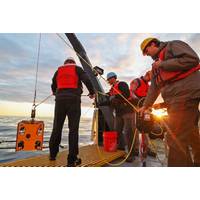
Shipwreck Windfall: ROV Expedition Captures Maritime History
a candy store when he got to see that."The Rhod(y) Ahead“We've got huge plans for little Rhody,” laughed Fahy. Upcoming projects include cold-water coral studies in the Gulf of Maine and participation in the documentation of the intentional sinking of the S.S. United States off the Florida coast to create an artificial reef. “This is a really cool opportunity because you can do a pre-sinking inspection to know what the current conditions are. After the vessel is sunk and the community starts to interact with it as a dive site, how it changes is an important scientific question
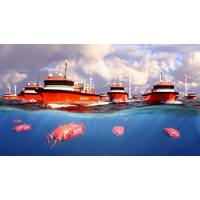
Nauticus Robotics, AOS Join Forces for Offshore Robotics
systems, delivering new efficiencies to offshore industry operations.Under the agreement, Nauticus and AOS are planning to blend their engineering expertise and technical capabilities to address maritime autonomy opportunities.Immediate discussions include plans to use AOS's test lake facility in Florida, where they intend to begin a series of trials with Nauticus' flagship autonomous underwater vehicle (AUV), Aquanaut.In addition to advancing Aquanaut's overall operating parameters, plans are underway to explore the best way to integrate the AUV into a broader collaborative ecosystem of
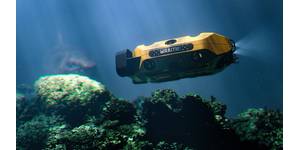

 August 2025
August 2025





